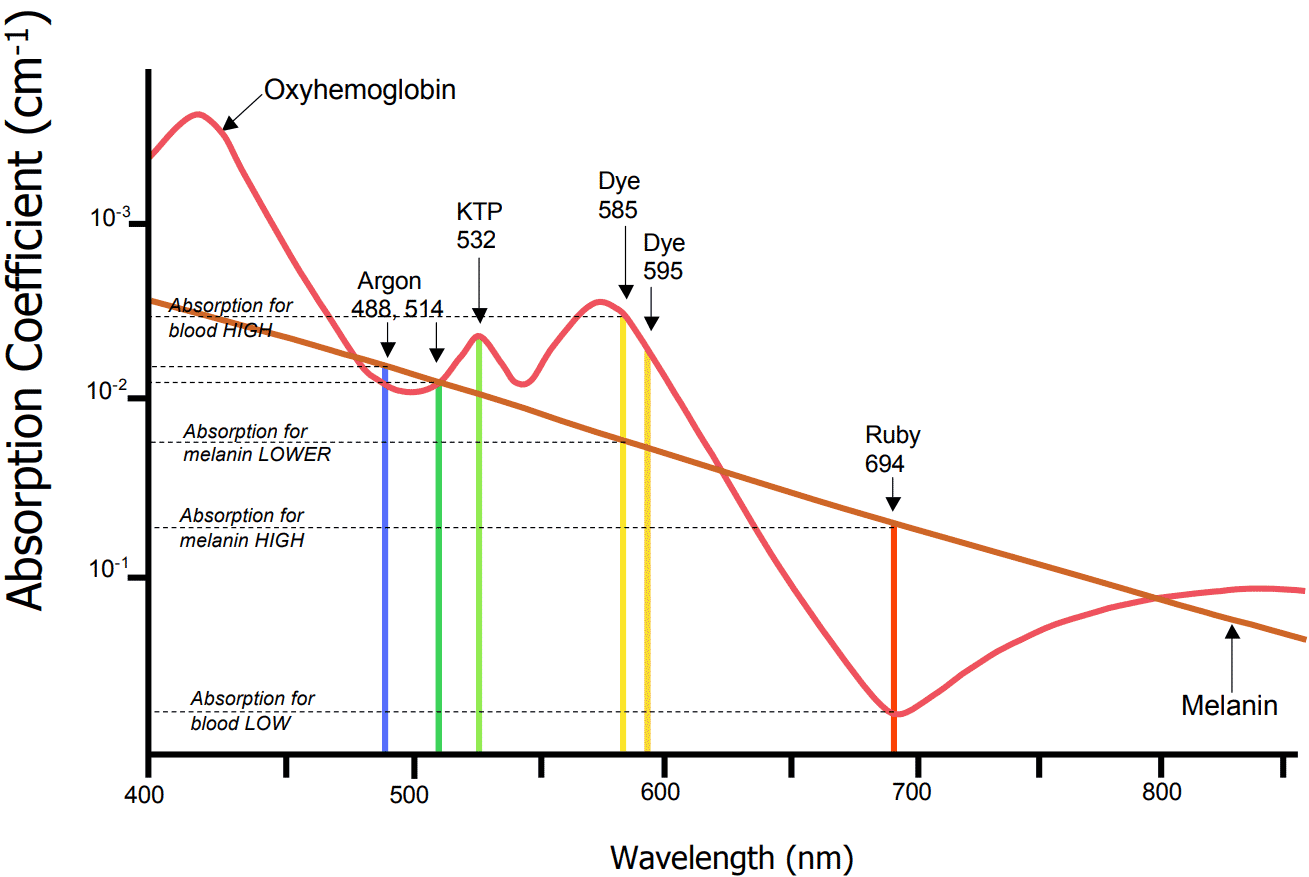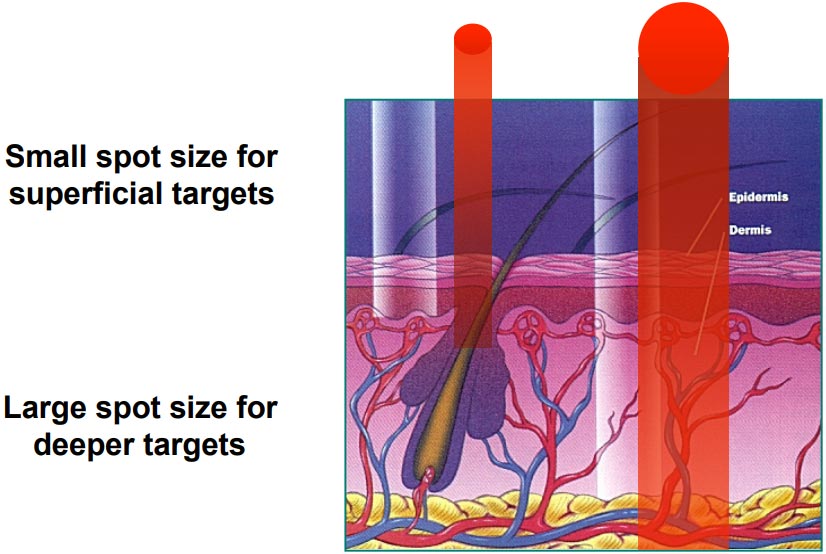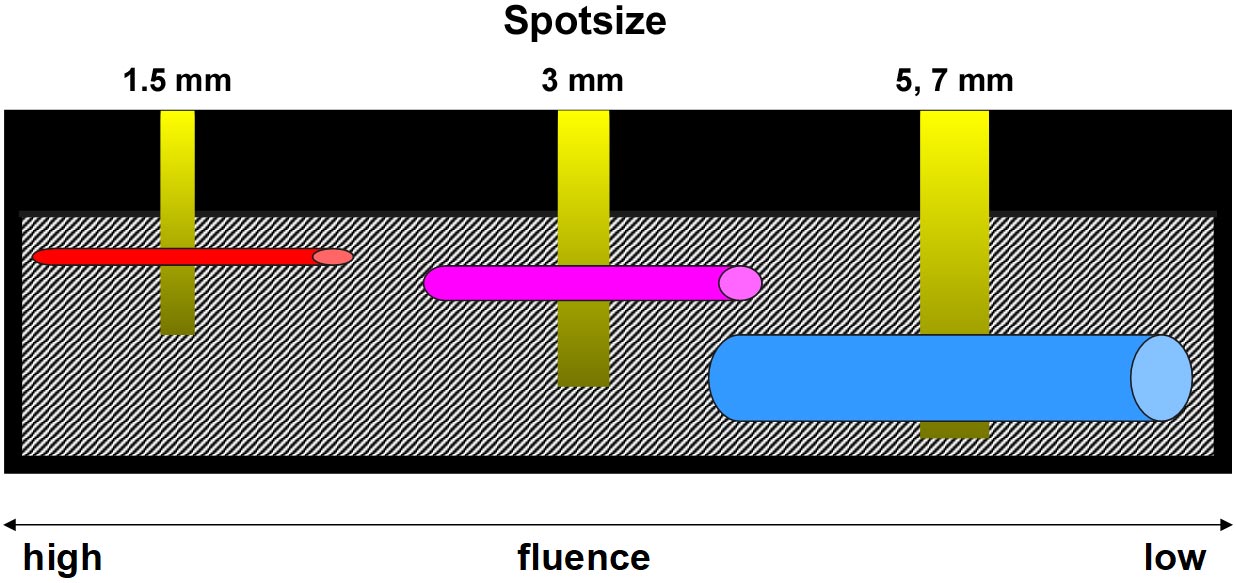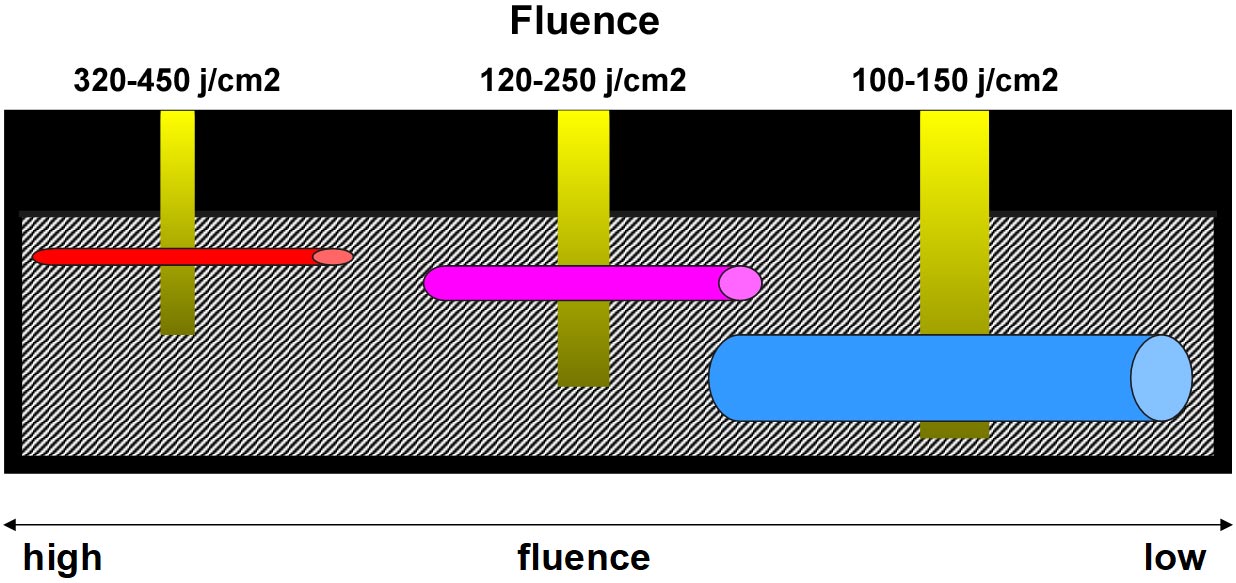The following information is intended to explain the differences between facial vein treatments offered on every street corner and treatment provided by medical specialists from a designated laser suite.
Why choose us?
The expert treatment of facial veins requires a skilled operator using advanced technologies who is able to safely alter the following laser parameters
- Wavelength (colour of light in nm)
- Pulse Width (shutter speed in ms)
- Spot size (measured usually in mm)
- Fluence (power density in j/cm2)
The appropriate selection ensures optimal destruction of target blood vessels without collateral damage to the surrounding skin.
Laser Wavelength
Expert treatment of facial veins involves the use of laser and light technologies to target haemoglobin within blood vessels situated at multiple depths.
Vascular Absorption Spectrum

In general, the longer the wavelength the deeper the laser penetration
Depth of Penetration by Wavelength
- Superficial diffuse redness and very fine blood vessels are treated using the Pulsed Dye Laser (PDL) 595nm either in purpuric (bruising) or non- purpuric (non-bruising) modes. (maximum depth of penetration 1.5mm)
- Larger discrete superficial bright red (oxygenated) vessels are removed using the KTP 532nm LP laser (maximum depth of penetration 1mm)
- Larger discrete deeper purple/blue (de-oxygenated) vessels are removed using the Nd Yag 1064nm LP laser (maximum depth of penetration 4-5mm)
Multiple laser wavelengths also enable the safe treatment of most skin types. Light-skinned individuals respond well to the PDL 595nm or KTP 532nm LP laser whilst darker-skinned individuals respond to the Nd Yag 1064nm laser.
At our Cambridge Laser Clinic we utilize numerous laser wavelengths to achieve optimal results.
Pulse Width (dwell time)
By selecting a pulse width that is less than the thermal relaxation time (the time required for an object to cool to half the temperature) of the blood vessel, the blood vessel can be selectively coagulated without damaging the surrounding skin.
This is important because
- Thin structures such as fine blood vessels are unable to ‘hold’ heat and short pulse widths (5-10ms) are needed to ensure vessel closure and destruction.
- Larger blood vessels heat more slowly and require much longer pulse widths (20ms -40ms)
Target Diameter v Pulse Duration
For optimal results, multiple pulse widths are required to close and destroy blood vessels of different diameters
Spot Size
In general the bigger the spot size the deeper the penetration of laser light for that given wavelength.
Spot Size and Depth of Optical Penetration
Effect of Changing Spotsize
Diffuse redness and blush is caused by massive numbers of microscopic blood vessels so densely packed together that we are unable to see individual vessels and hence visualise a uniform blanket of redness. Optimal treatment utilises the latest generation of Pulsed Dye Laser at 595nm. This laser has massively superseded the most advanced Intense Pulsed Light devices by utilising multi-pass techniques enabling the operator to laser over the same skin 2 or 3 times in one treatment session altering the spot size on each pass hence targeting blood vessels at multiple depths.
Larger discrete blood vessels are targeted utilising the KTP 532 LP or Nd Yag 1064nm LP lasers. Ideally spot size should equate to vessel diameter so often multiple spot sizes are required to optimally treat varying vessel diameters.
Vessel diameter 0.1-0.3mm = spot size 1.5mm
Vessel diameter 0.3-0.6mm = spot size 3mm
Vessel diameter 0.5-1.5mm = spot size 5mm
Fluence (power)
Successful closure and hence destruction of blood vessels necessitates heating the blood within the vessel to at least 70 degrees C. The resulting thermally injury to the blood vessel wall stimulates an inflammatory reaction and reabsorption of the damaged structure.
In general
Lower fluences for “target rich” areas such as large blue veins. Higher fluences for smaller diameter “target poor” areas such as small red facial veins
If too little energy is applied, the target blood vessel will heat but not reach destructive temperatures. If too much energy is applied, excess energy will dissipate beyond the target and destroy adjacent structures.
Effective treatment hence necessitates high quality lasers that can safely deliver large amounts of energy (up to 450 j/cm2) to the target blood vessel without collateral damage to the surrounding skin
All vascular treatments at Cambridge Laser Clinic are delivered utilizing protective skin cooling using forced cold air (ACC) or cryogen spray (DCD) to ensure any unwanted heat transferred to the skin is quickly removed.
The use of laser technologies with variable wavelengths, variable pulse durations, variable spot sizes and variable fluences enable the laser operator to target the entire range of facial thread veins irrespective of vessel depth, vessel diameter or colour.
High quality lasers must be accompanied by skilled laser operators for superior results.
Our expert medical team has in excess of 30 years laser experience and have completed more than 150,000 successful treatments. Rest assured you are in safe hands. All procedures at our Cambridge Laser Clinic are performed by fully qualified doctors, nurses and practitioners.






